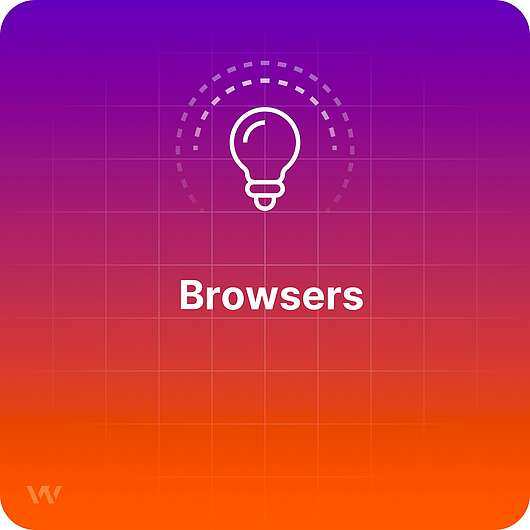- Why Us?
- Features
White Label
For SaaS Platforms & Agencies
Provide our complete analytics suite to your clients, directly within your own interface and with your/their own branding. Discover Analytics-as-a-Service and White Label Analytics. Great benefit, minimal effort.
- Pricing
- White Label
- Success Stories
- ResourcesGetting Started
Browsers
TL;DR

A web browser is an app with the primary function of retrieving information resources from the web, transforming them into human-readable content and displaying them on user’s devices.
What is a browser?
A web browser (or browser for short) is a software application used for accessing the Internet. The purpose of a browser is to fetch data and information from the World Wide Web and display it on devices. There are dedicated browsers for different types of devices (mobile, desktop) and all major web browsers have mobile versions. Browsers are used for accessing and displaying websites and other sorts of content that is created in HTML and XML. HTML is the standardized Hypertext Markup Language for documents created for the browser to display, while XML is the extensive version of it. These types of languages are in most cases boosted with CSS (Cascading Style Sheets) and JS (JavaScript) technologies. CSS has the role of adapting content in a visual manner across multiple devices and separating fonts, layouts, colors and other elements, while JS is used for creating dynamic content.
The Browser Feature can be found in the Devices menu, and it’s one of the features that helps website owners strategize about UI/UX.
Why are browsers important?
The most important thing about web browsers is that they transform pages that are delivered using Hypertext Transfer Protocol (HTTP/HTTPS), File Transfer Protocol (FTP), but also from email handlings (mailto:) and web files (file:), into content that otherwise would not have been readable by humans.
The first browser was created in 1990 and since then there has been a continuous evolution in this field, with more capabilities being progressively added to browsers.
As of the second quarter of this year, more than half of the world’s population has used a web browser.
How do web browsers work?
These are the steps a browser takes in order to display content: After entering the URL, the browser will find the IP address for the domain name. Next, it will send an HTTP request to the server. After the server sends back a response, the browser will start rendering the page. The browser will also send additional requests for embedded objects (images, CSS) until the web page is fully loaded.
What are the most common browsers?
According to Wikipedia, here are some of the top browsers:
- Google Chrome
- Mozilla Firefox
- Internet Explorer
- Safari
- Microsoft Edge
- Opera

